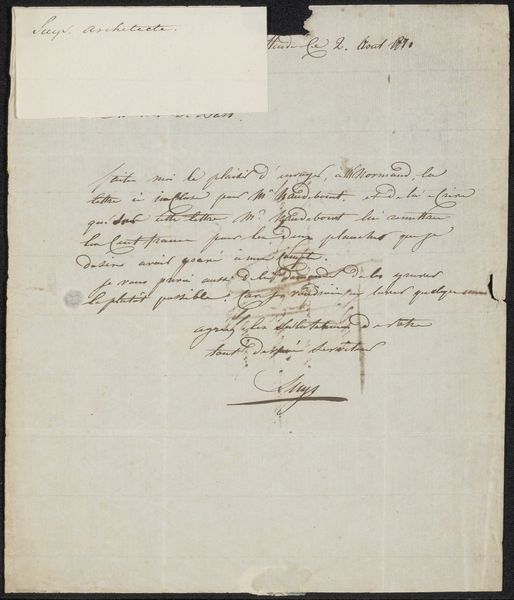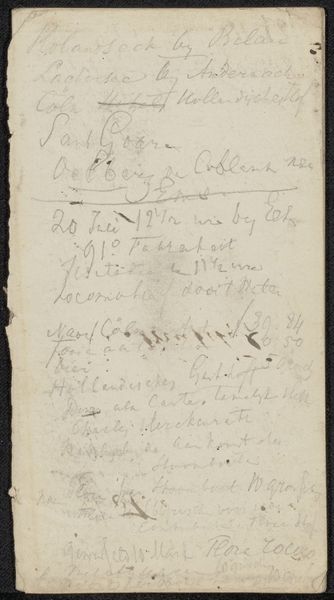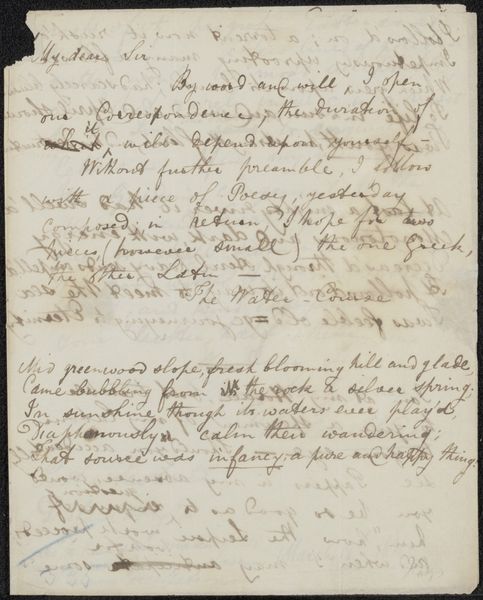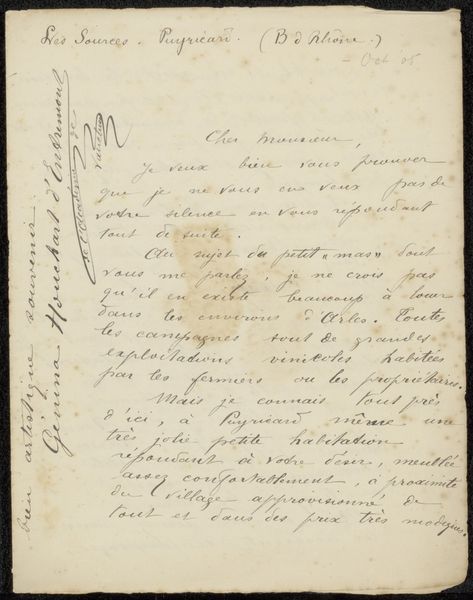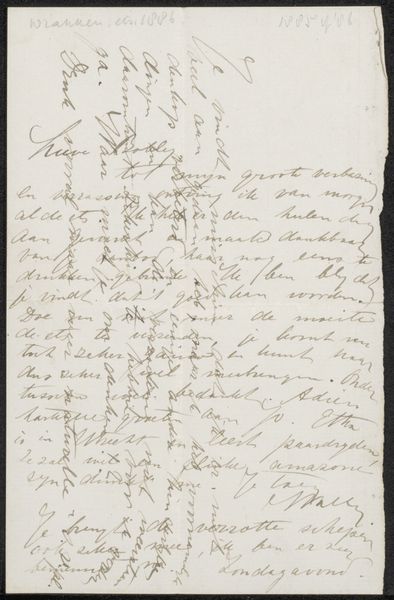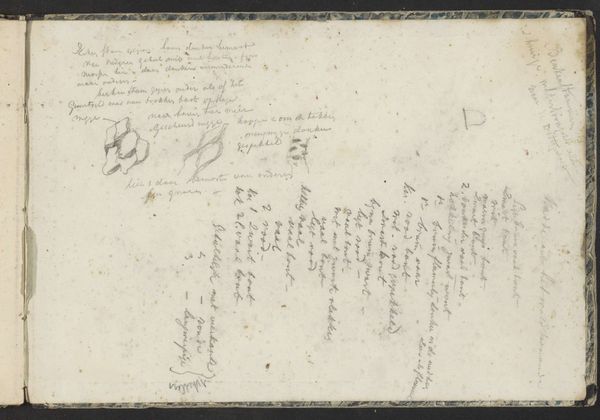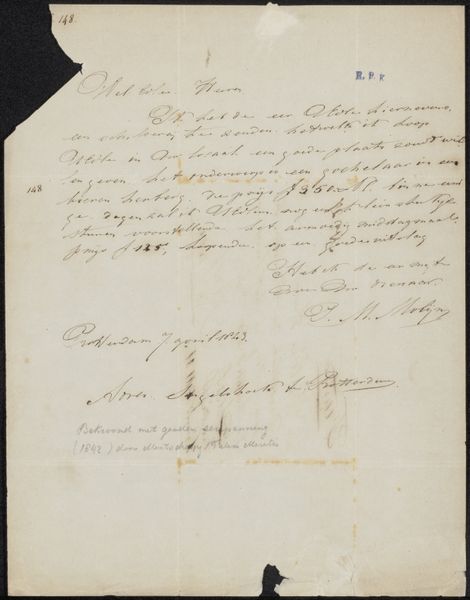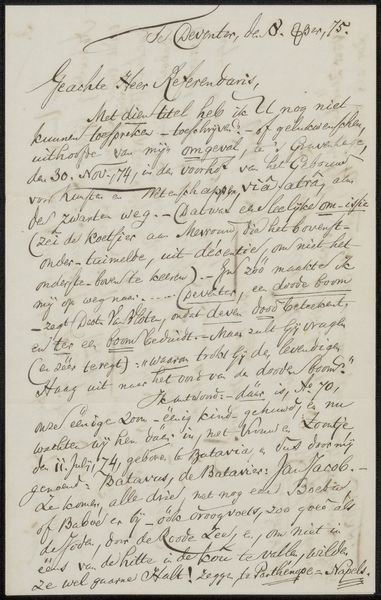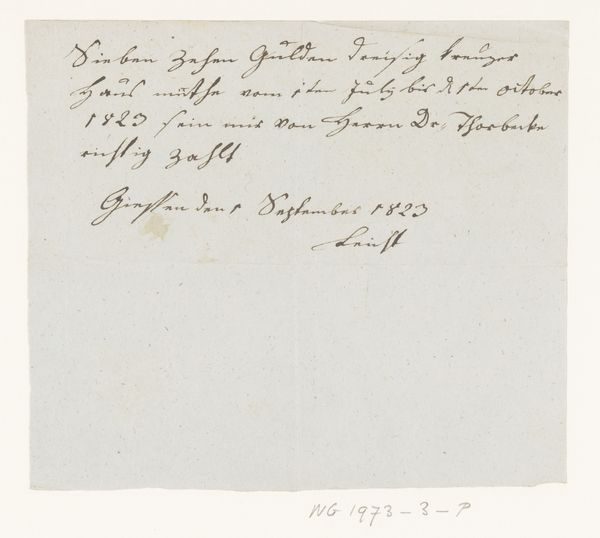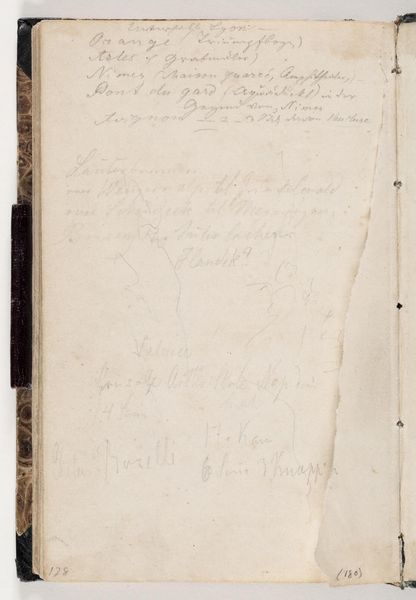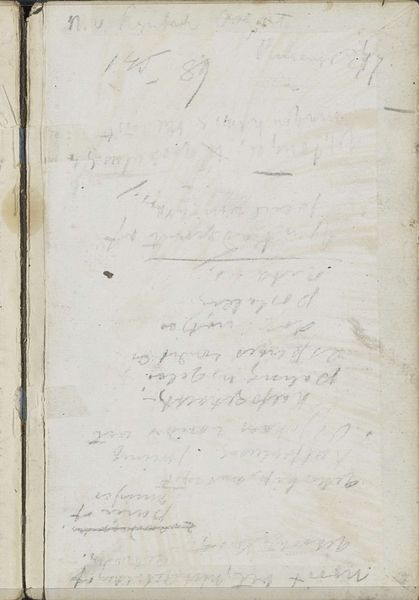
Grafschrift voor Gerard ter Borch (II) en document betreffende Gerard ter Borch (II) 1681
0:00
0:00
#
aged paper
#
toned paper
#
hand drawn type
#
personal sketchbook
#
ink drawing experimentation
#
ink colored
#
pen work
#
sketchbook drawing
#
sketchbook art
#
watercolor
Copyright: Rijks Museum: Open Domain
Curator: Oh, this is a really beautiful piece. It's titled "Grafschrift voor Gerard ter Borch (II) en document betreffende Gerard ter Borch (II)", made in 1681 by Gesina ter Borch. It’s a sort of mixed-media work using pen, watercolor, and ink on what looks like aged paper. It resides here in the Rijksmuseum. Editor: It looks like something pulled straight from a time capsule! The sepia tones give it such a feeling of age, of fragility. It’s like a whispered secret from the 17th century. What exactly are we looking at here? Curator: Well, "Grafschrift" translates to epitaph or memorial inscription. So, it's essentially Gesina's tribute to her brother, Gerard ter Borch II. Part of it also seems to be documentation about him, almost like a financial ledger, if I interpret it correctly. You see scribbled notes alongside what appears to be her finer, more stylized handwriting. Editor: A financial ledger rubbing shoulders with memorial sentiments... that says so much about the realities of life and death for women artists in that period! They're balancing the artistic and the economic, the personal with the societal constraints. It feels like Gesina is performing a complex balancing act, preserving memory while navigating patriarchal structures. Curator: Absolutely! It feels like such a deeply personal sketchbook page. You can sense her own artistic flourishes intermingling with more utilitarian record-keeping. The scripted fonts are wonderful, almost experimental. It makes me wonder if she intended it to be seen, or if it was just for her own eyes. Editor: And did women in that era typically have to record this information or manage family funds? Curator: Yes! For example, when her brother Gerard became successful as a painter, she managed the family affairs, even posed as model for his pictures to make ends meet. These small glimpses of interiority in an era where women's lives were so regulated—it gives me chills! Editor: I’m captivated. Thinking about the relationship, brother and sister both navigating their roles within a prominent family of artists, supporting one another, documenting lives – the materiality here makes it all tangible. What an intimate object. Curator: It truly is. And you’re right— it’s not just a document, it’s a tender preservation of a life. A brother. An artist. It's quite special to experience that across centuries.
Comments
No comments
Be the first to comment and join the conversation on the ultimate creative platform.
